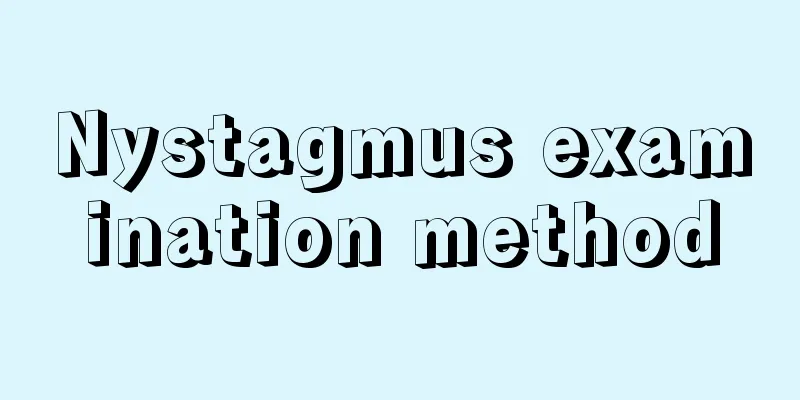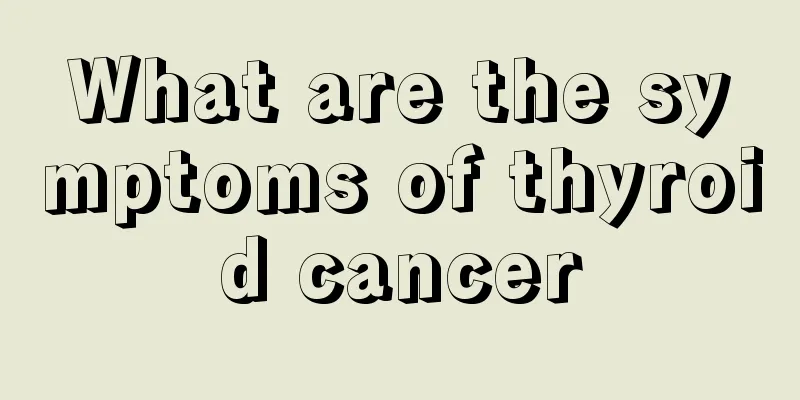Nystagmus examination method

|
Eye disease is a type of health problem that everyone may face. When you feel that your eyeballs are swinging back and forth rhythmically, whether horizontally, vertically or in circles, it means that there may be some pathology in your eyeballs, most likely nystagmus. What examination methods do doctors use when facing this disease? Let us pay attention to it together. 1. What is nystagmus? Nystagmus is an involuntary, rhythmic, back-and-forth eye movement. The directions are divided into horizontal, vertical, rotational, etc., with the horizontal type being the most common. The direction of nystagmus is usually indicated by the fast phase direction, and the fast phase is the compensatory movement to restore the gaze position. It is called nystagmus for short. It is often caused by diseases of the visual system, extraocular muscles, inner ear labyrinth and central nervous system. Nystagmus is not an independent disease, but a clinical manifestation of certain diseases, so treatment should be targeted at the cause. 2. Causes 1. Ocular nystagmus It refers to the central vision disorder of the macula, which is the nystagmus caused by difficulty in forming the gaze reflex. (1) Physiological gaze nystagmus includes oblique nystagmus, visual dynamic nystagmus and latent nystagmus. (2) Pathological fixation nystagmus includes blinding nystagmus, amblyopic nystagmus, occupational nystagmus, etc. 2. Vestibular nystagmus 3. Central nystagmus 4. Congenital idiopathic nystagmus 3. Clinical manifestations 1. Jumping type The eyeball moves back and forth at significantly different speeds. After slowly turning to the other direction to a certain extent, it suddenly returns in a jerky motion. This type of tremor has chronic and fast phases. The chronic phase is the physiological phase, and the fast phase is the corrective movement of the slow phase. The direction of the fast phase is the direction of nystagmus, and the fast phase is related to the cause. 1. Swing type The movement of the eyeball is like a pendulum, with no fast or slow phases. Its speed and amplitude are equal. It is more common in patients with binocular amaurosis and amblyopia. 4. Inspection Methods 1. General examination Ask the patient to look straight ahead and observe the nystagmus as he follows the examiner's finger moving in a certain direction. Some examinations require covering one eye. To this end, the following points should be noted during inspection: (1) Is the nystagmus latent or manifest? (2) Whether the nystagmus is combined—the movements of the two eyes are in sync with each other—or dissociated. (3) Type, direction, degree, frequency, amplitude, etc. of nystagmus. (4) Whether there is an endless eye position. 2. Special inspection Electronystagmography and other instrumental examinations. 5. Treatment 1. First of all, symptomatic treatment should be carried out according to the cause of the disease. 2. Surgical treatment: Congenital idiopathic nystagmus can be treated with surgery to move the resting eye forward to improve vision and reduce or inhibit the occurrence of nystagmus. |
<<: Causes of oral mucosal blood blisters
>>: What are the symptoms of a dislocated jaw?
Recommend
What are the dietary precautions for teratoma
When suffering from teratoma, the patient must be...
Breath smells like alcohol
Bad breath is a phenomenon that is unique to each...
How to prevent the occurrence of pituitary tumors
Pituitary tumor is a tumor disease that is very h...
What is the most dangerous thing about colon cancer recurrence?
What is the most dangerous thing about colon canc...
What to do if rectal cancer relapses after surgery and chemotherapy
Cancer, also known as malignant tumor, is a disea...
5 kinds of food that office workers should eat to maintain their health in spring
kelp Kelp contains a lot of iodine, which helps t...
What are the symptoms of nasopharyngeal cancer?
What are the symptoms of nasopharyngeal cancer? S...
Which folk remedies for treating lung cancer are effective? 4 folk remedies for treating lung cancer are recommended
I believe that everyone is familiar with the mali...
What are the effective methods for treating lung cancer? 4 methods can effectively treat lung cancer
We all want to grow up healthy and live happily w...
Which blood spot should I press for toothache
Long-term tooth pain can be very distressing to t...
Heart valve surgery success rate
Generally speaking, once heart valve disease is d...
The function of polarizing filter
People's lives are also colorful, and people&...
There is inflammation in the intestines
In life, we cannot guarantee that we will not get...
Is hair a connective tissue?
Everyone usually takes care of their hair, especi...
Can rectal cancer be felt by hand?
Can rectal cancer be felt with your hands? 1. Whe...









